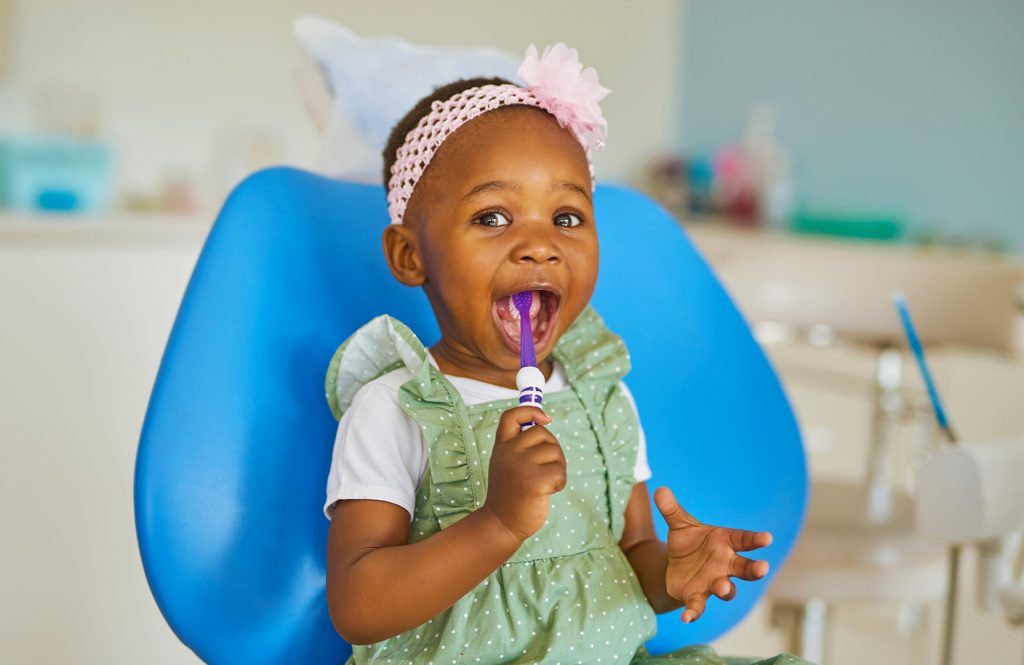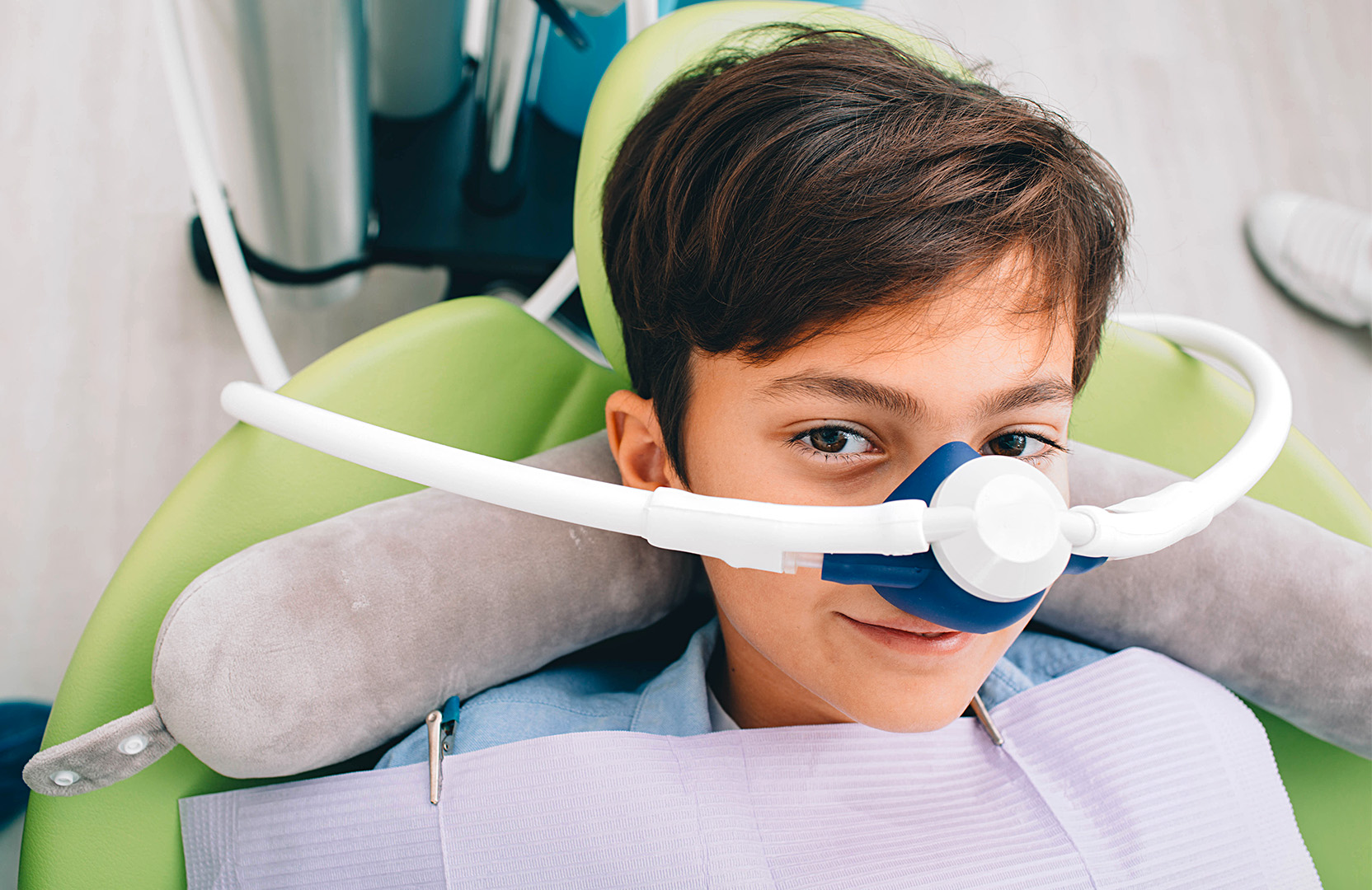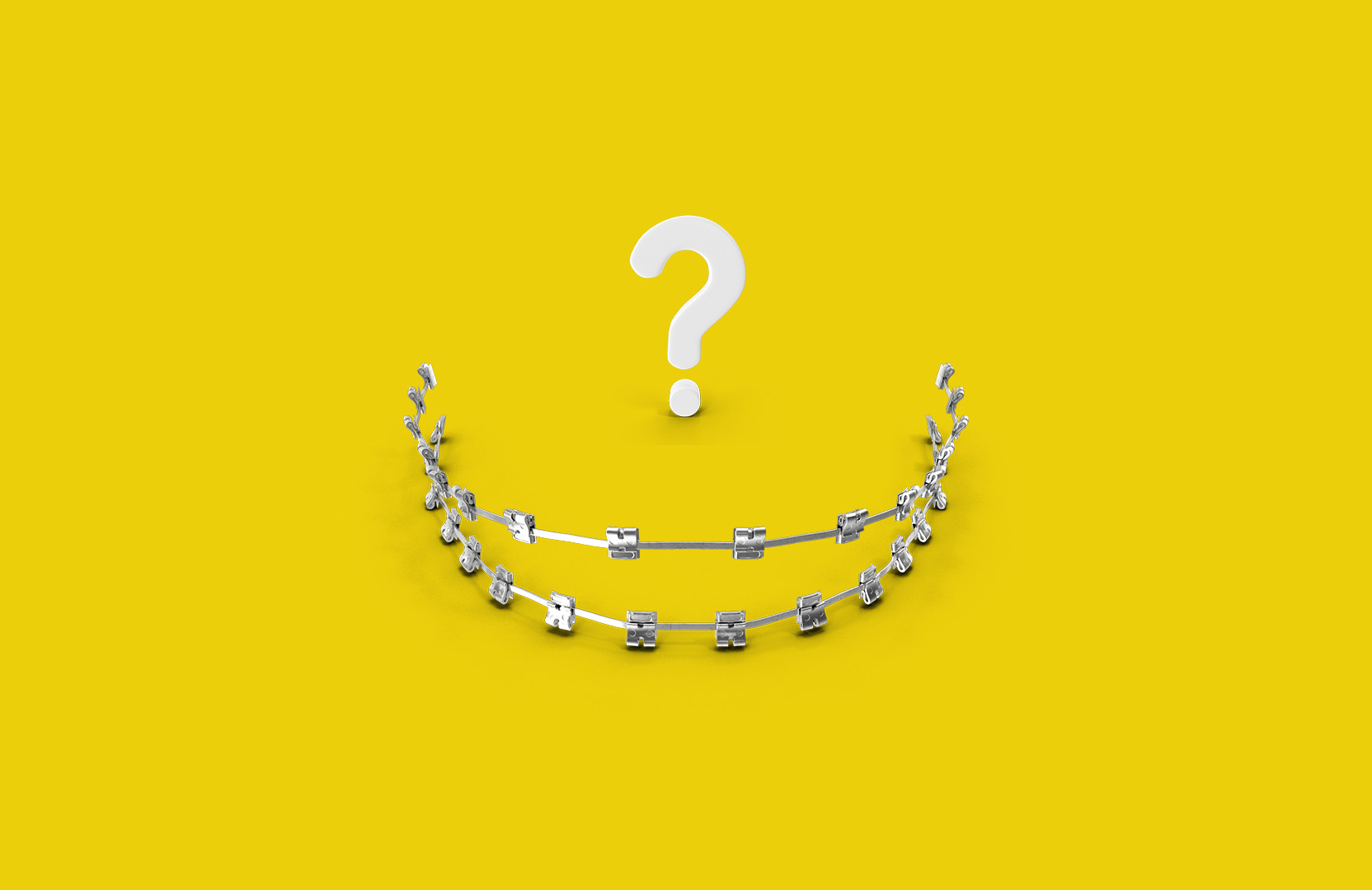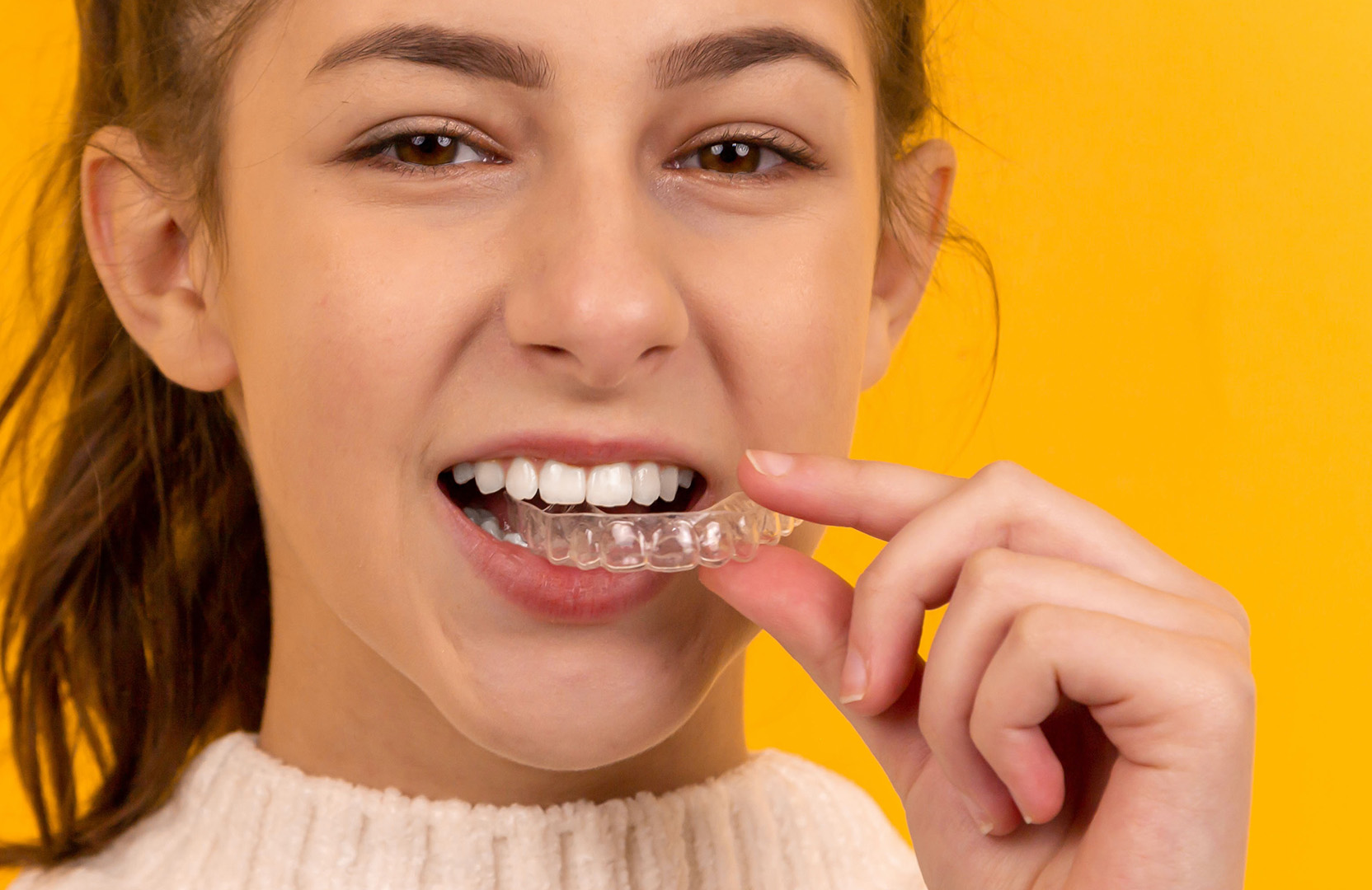Did you know that a child’s teeth begin forming before birth? Though the primary teeth, also known as baby teeth, are already developing before they are born, you won’t be able to see them until they break through the gums– also known as “eruption.” Eruption can occur as early as four months, beginning with the lower central incisors, shortly followed by the upper central incisors.
Your child’s first teeth are an exciting milestone. But, for some parents, caring for these new teeth can be confusing. When should a child’s first dental visit be? How important are baby teeth to my child’s health? What can a parent do in the case of a dental emergency?
We’ll answer all of these questions and more. Read on to find out how to care for your child’s first teeth.
Eruption
As stated above, your child’s first teeth can be expected to come in at as early as four months old, and will likely start with the lower central and upper central incisors. Most children start teething by around 6-8 months old. The order of the rest of the teeth emerging is unique to your child.
By age 6, permanent teeth will likely begin to appear, beginning with molars and lower central incisors. When your child turns 8, the bottom 4 primary teeth (lower central and lateral incisors) and the top 4 primary teeth (upper central and lateral incisors) will likely be gone, and adult teeth will have taken their place. Your child’s teeth will take a break for about two years, with no visible growth, and then the process of permanent teeth coming in will continue until about age 21.
Adult teeth growing behind baby teeth
It’s possible that your child will experience adult teeth growing in behind their still intact baby teeth. Though this can look unusual, it’s perfectly normal and common in children. Usually, if the child begins to wiggle the baby tooth, it will fall out on its own within two months of the new growth. If the tooth does not fall out within two months of the adult tooth beginning to emerge, your child should visit the dentist’s office, where the baby tooth can be removed, allowing the adult tooth to slide into place naturally.
Early dental health and tooth brushing
It is extremely important for a child’s primary teeth to be taken care of. Neglecting issues such as cavities can lead to problems in the development of adult teeth. Baby teeth are vital for your child to chew and eat properly. They also provide space for the permanent teeth and guide them into the correct position, and play a key role in normal development of the jaw bones and muscles. Although a child’s front 4 teeth typically are replaced by age 6-7, molars are not replaced until around 11-13 years of age. It’s vital to keep baby teeth in good health, helping your child’s oral functioning and future permanent teeth to thrive.
Even the smallest teeth require regular cleaning. For a child under 3 years old, perform tooth brushing with a spot of toothpaste roughly the size of a grain of rice. After age 3, a pea-sized amount of toothpaste should be used, and children should still be assisted– they do not have the skills to brush their teeth properly until they are older, and they need your help! Remember to have your child spit out excess toothpaste. It should not be swallowed.
When looking for a toothpaste for your child, make sure to pick one recommended by the American Dental Association, which should be shown on the box and tube. These products have undergone testing that ensures their safety. Many toothpastes are too harsh for young smiles, and can wear away enamel, damaging childrens’ teeth. Choosing an ADA approved childrens’ toothpaste helps ensure safety and effectiveness.
First Visits
The ADA recommends establishing a “Dental Home”– a comfortable, safe dentistry office where regular visits and care can occur– by one year of age. This helps promote regular preventative and routine oral care.
There are ways to make the first dental visit positive and enjoyable, without causing unnecessary fear. This helps establish a safe place for dental care. If your child is old enough, they should be informed of the time and told that the dentist and staff will explain all procedures and answer any questions they may have.
It is best if you refrain from using words around your child that might cause unnecessary fear, such as needle, pull, drill or hurt. Pediatric dental offices make a practice of using words that convey the same message, but are pleasant and non-frightening to the child.
Dental Emergencies
Just like adults, children can experience dental emergencies and require immediate care. Children are notoriously curious and not always coordinated or experienced enough to avoid injury in situations of play, sports, or even every day activities.
Below are a list of dental emergencies that could be experienced by children.
- Toothache
- Cut or Bitten Tongue, Lip or Cheek
- Knocked Out Permanent Tooth
- Knocked Out Baby Tooth
- Chipped/Fractured Permanent Tooth
- Chipped/Fractured Baby Tooth
- Severe Blow to the Head
- Possible Broken or Fractured Jaw
Pulp Therapy
The pulp of a tooth is the inner, central core of the tooth. The pulp contains nerves, blood vessels, connective tissue and reparative cells. The purpose of pulp therapy in Pediatric Dentistry is to maintain the vitality of the affected tooth (so the tooth is not lost).
Dental caries (cavities) and traumatic injury are the main reasons for a tooth to require pulp therapy. Pulp therapy is often referred to as a “nerve treatment”, “children’s root canal”, “pulpectomy” or “pulpotomy”. The two common forms of pulp therapy in children’s teeth are the pulpotomy and pulpectomy.
A pulpotomy removes the diseased pulp tissue within the crown portion of the tooth. Next, an agent is placed to prevent bacterial growth and to calm the remaining nerve tissue. This is followed by a final restoration (usually a stainless steel crown).
A pulpectomy is required when the entire pulp is involved (into the root canal(s) of the tooth). During this treatment, the diseased pulp tissue is completely removed from both the crown and root. The canals are cleansed, disinfected and, in the case of primary teeth, filled with a resorbable material. Then, a final restoration is placed. A permanent tooth would be filled with a non-resorbing material.
Radiographs
Radiographs (X-Rays) are a vital and necessary part of your child’s dental diagnostic process. Without them, certain dental conditions can and will be missed.
Radiographs detect much more than cavities. For example, radiographs may be needed to survey erupting teeth, diagnose bone diseases, evaluate the results of an injury, or plan orthodontic treatment. Radiographs allow dentists to diagnose and treat health conditions that cannot be detected during a clinical examination. If dental problems are found and treated early, dental care is more comfortable for your child and more affordable for you.
The American Academy of Pediatric Dentistry recommends radiographs and examinations every six months for children with a high risk of tooth decay. On average, most pediatric dentists request radiographs approximately once a year. Approximately every 3 years, it is a good idea to obtain a complete set of radiographs, either a panoramic and bitewings or periapicals and bitewings.
Pediatric dentists are particularly careful to minimize the exposure of their patients to radiation. With contemporary safeguards, the amount of radiation received in a dental X-ray examination is extremely small. The risk is negligible. In fact, the dental radiographs represent a far smaller risk than an undetected and untreated dental problem. Lead body aprons and shields will protect your child. Today’s equipment filters out unnecessary x-rays and restricts the x-ray beam to the area of interest. High-speed film and proper shielding assure that your child receives a minimal amount of radiation exposure.
From prenatal development to teething to loose teeth and emerging adult teeth, pediatric dentistry plays a vital role in keeping your child safe, healthy, and developmentally on track from mere months old. Kennedy Dental Care provides your family with a dental home, a comprehensive care environment that is comfortable, safe, and friendly. We help you give your child the preventative and routine care they need, as well as providing top notch care and comfort in case of emergencies. Click here to learn more about Kennedy Dental Care, your dental home.




